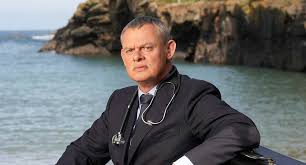Bag carrying GPs needs to reinvent themselves if they are to manage chronic and complex disease
The ‘bag carrying GP of old’ needs to reinvent him or herself if he or she is to manage chronic and complex disease.
I was not surprised when the Grattan Institute argued that patients in general practice are not receiving the very best care. I’m grateful to all who have been vocal in defending our discipline from the Grattan gun because the good work in general practice deserves defending.
But surprised I was not. I don’t systematically measure the outcomes of my care, nor do I measure the proportion of my patients who receive the preventive care that evidence suggests they should be getting.
I was not surprised but I was not devastated. An American colleague, Dr James L. Holly makes the point this way. He says, “I’m not embarrassed if someone can show that my care is suboptimal; I’m only embarrassed if I don’t do anything about it.”
In several areas the profession is ahead of the report of the Grattan Institute. The Future of General Practice1 from the RACGP and A Model for General Practice2 from the western Sydney primary health network (WentWest) demonstrate prescient leadership.
One element of the current predicament is that super-doc, the doctor who does almost everything, is in the modern era “a bottleneck preventing patients getting best possible care3”.
This is not the only factor that restricts patient access to the highest possible care. However it is a piece of the jigsaw that deserves discussion whenever we talk about health care reform.
Colleagues of my vintage will remember the era when to be a bag carrying GP was a badge of honour. The bag signified being able to do home visits and pretty much anything else. The GP reserved to themself the roles of gatekeeper, care co-ordinator, case manager and the decider of interventions. Doc Martin indeed.
But Doc Martin needs to reinvent himself if he is to manage chronic and complex disease well and offer all patients the preventive care that the evidence suggests will make a difference to their wellbeing.
The unreformed culture that we share with our patients allows a focus on serial presentations of acute predicaments and problems. We are skilled in addressing these patient demands. We are good at handling the volume of demand while keeping patients satisfied.
One of the risks that follows from this way of working is that we are exhausted; too exhausted
to contemplate opportunities for serving our patients better.
There are practices and systems, here and overseas, doing much better than most of us currently do. One of the features they all share is that they have escaped the notion that the doctor must do everything and they have discovered the benefits of teamwork.
These practices and systems have data to show that effective teams provide superior care that improves patient outcomes and liberates doctors to unanticipated levels of professional satisfaction.
One of these systems is the South East Texas Medical Associates (SETMA). The aforementioned Dr Holly leads SETMA and he says, “the essence of the patient-centred medical home is teamwork”.
The two Australian documents mentioned above have a focus on change that enables teamwork.
If an expert in that old-fashioned discipline of time and motion were to shadow me for a session they would find that at least 30% of my time was spent performing tasks that others could do better and more efficiently. What would they find if they shadowed you?
Colleagues, liberation beckons!
Michael Fasher is Adjunct Associate Professor at Western Sydney University
References:
1. The Future of General Practice, RACGP 2015
http://www.racgp.org.au/vision
2. A Model for General Practice, WentWest 2015
http://www.wentwest.com.au/news-publications/reports/item/551-a-model-for-australian-general-practice-the-australian-person-centred-medical-home
3. Dr Kirsten Meisenger, Cambridge Health Alliance, Boston, USA. (Personal
communication)


